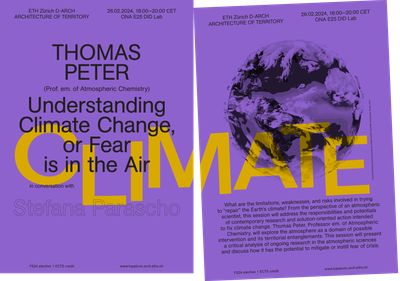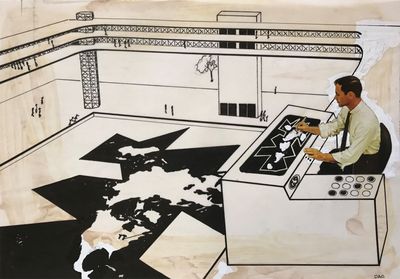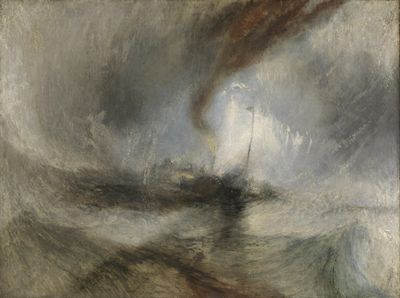Understanding Climate Change, or fear Is in the AirThomas Peter in conversation with Stefana Parascho
What are the limitations, weaknesses, and risks involved in trying to “repair” the Earth’s climate? From the perspective of an atmospheric scientist, this session will address the responsibilities and potentials of contemporary research and solution-oriented action intended to “fix” climate change. Thomas Peter, Professor em. of Atmospheric Chemistry, will explore the atmosphere as a domain of possible intervention and its territorial entanglements. This session will present a critical analysis of ongoing research in the atmospheric sciences and discuss how it has the potential to mitigate or instill fear of crisis.
THOMAS PETER was Full Professor of Atmospheric Chemistry at the Institute for Atmosphere and Climate at ETH Zurich since January 1999. He retired in January 2023. Born in 1958 in Marburg, Germany, he studied physics at the University of Marburg, the Technical University of Munich and the University of Maryland. In 1988, he received his Ph.D. with a theoretical thesis in the field of heavy-ion-induced inertial confinement fusion. In 1990, he moved to the Max Planck Institute for Chemistry in Mainz, Germany, where he became head of the group for heterogeneous chemistry and microphysics of atmospheric aerosols in 1995. In the same year, he was appointed coordinator for aerosol research in the German Ozone Research Program and member of the steering committee of the high-flying research aircraft “Geophysica”. He has been a co-author on several occasions of international scientific reports on the evolution of the stratospheric ozone layer.
Sessions on Territory—Climate Anxiety and Mobilizing in Crisis aims to understand how people perceive their position—their contributions, vulnerabilities, complicities, and anxieties—in the face of the climate crisis. Shifting analysis between the planetary scale and that of the body, we will ask in what ways do built environments structure and reflect the ways we mobilize against the effects of crisis.






